Life: Sustainable, Programmable, Bottom-Up Manufacturing
The future of manufacturing will be self-assembling products.
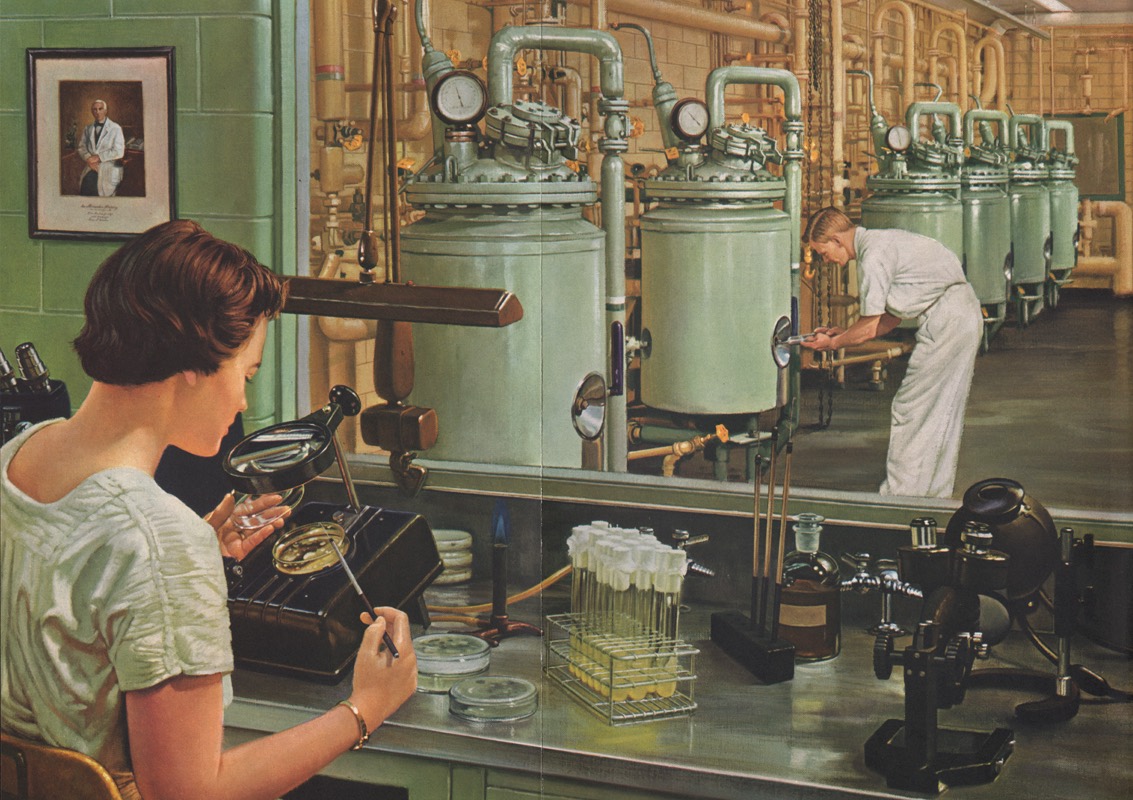 Penicillin (source: circulatingnow.nlm.nih.gov)
Penicillin (source: circulatingnow.nlm.nih.gov)
Highlights:
- Little robots make things
- Fabrication at the micron size
- Eukaryotic cells are key
- Using DNA and bioprinters
- Understanding biotech, biomimicry, and generative design
- Building smart cities and exploring the galaxy
I’m the first genetic engineer that Autodesk ever hired, and perhaps the last. Here is a candid shot of me (Figure 1). It has a little bit of everything: my laptop computer, a glass of wine, and a cup of coffee. I try to keep things balanced. And there is also a book on business strategy, because I have no idea how to do that stuff.
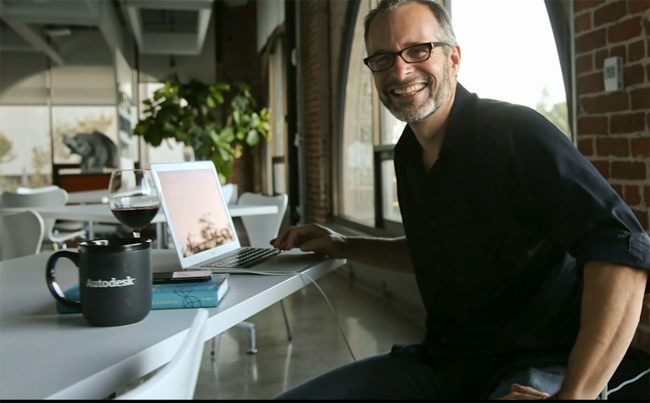
A Little Factory on Your Desk
Let me provide you with some background: “Tea, Earl Grey, Hot.” To me, this is the pinnacle of manufacturing, and of course I get it from Star Trek: The Next Generation.
Because the idea of having a matter assembler (Figure 2) really, really works for me. This is how I would love to make everything in the world. Unfortunately, that’s not how we do it. We make it through a lot of human effort in factories that seem to get larger and larger.
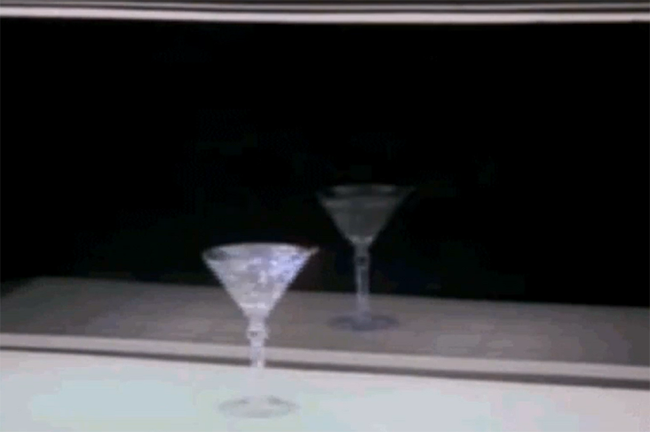
Today, thankfully, we have robots. And this whole conference is a testament to robotic technologies that are coming online more and more. We also have these little robots that are starting to allow us to make things (Figure 3).
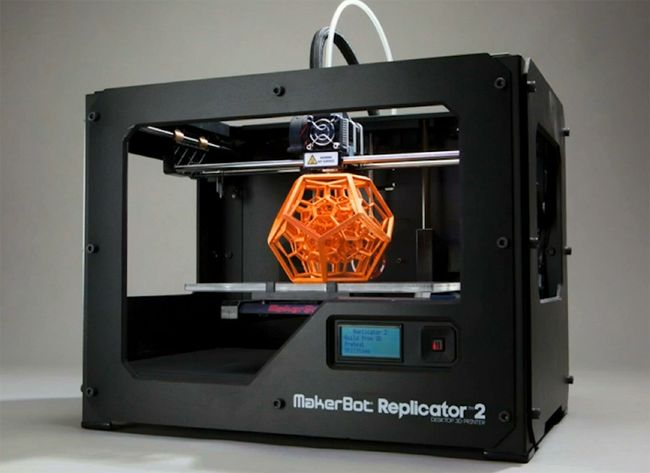
I can speak from experience that this is changing the culture in places, like AutoDesk, that make design software. Because now everyone essentially has a little factory they can put on their desk. And, of course, we’re learning how to work at smaller and smaller scales as some of these robotic equipment and manufacturing systems allow us to print smaller and smaller things, sometimes with very high precision.
Molecular Fabrication
I’ve been tracking a lot of the 3D printing space, and it’s really quite remarkable how small some of the microfabrication is getting today, even down to about 150 microns. To give you a better idea, Figure 4 shows a model car the size of about five bacteria laid out from end to end.
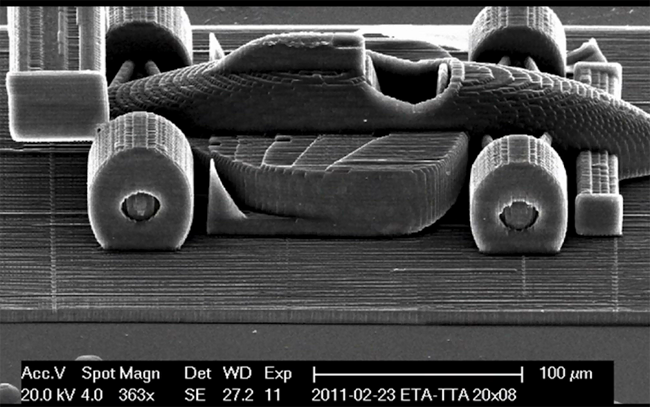
So, molecular manufacturing in three dimensions is already starting to happen, but these are crude technologies. You need to go out into the world to see what is really good at manufacturing. The software and hardware you see everywhere is based on this eukaryotic cell (Figure 5). You and I are made up of about 38 trillion of these little critters. And these are some of the most sophisticated manufacturing plants on the planet.
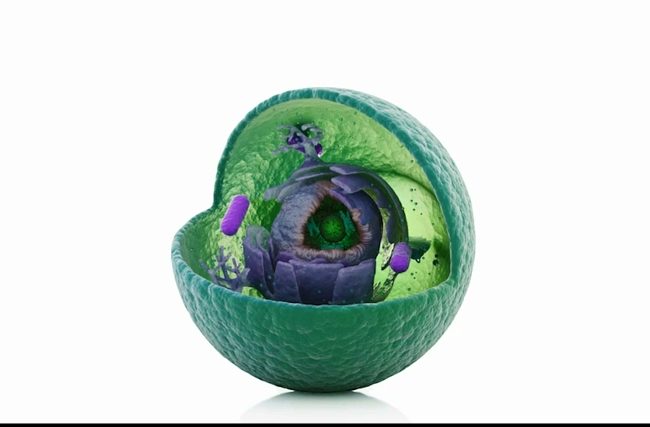
Figure 6 shows a peek at the gross circuit diagram of a cell, not even a eukaryotic cell. And it can make thousands of highly precise and robust compounds, with just the right proportions to make more of these little living creatures.
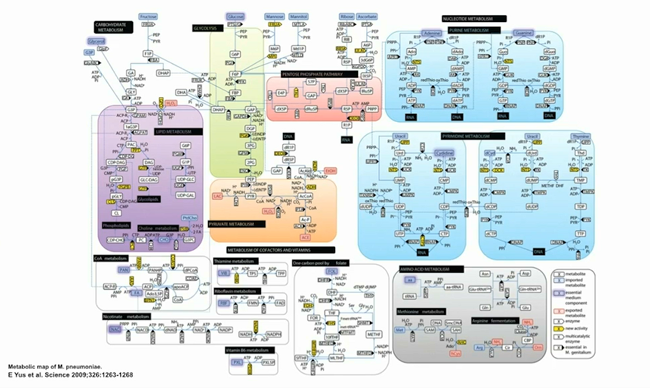
Cells are highly robust information processors that are aware of their environment. They are also responsive to their surroundings and regulate their own metabolism, which is essentially information processing. They can even create more of themselves.
The Molecular Programming Language
Our bodies are, in fact, networks of these little computing devices (Figure 7). Since we’ve gotten better with computing, we are starting to see biology through a new lens. Whether these devices are evolved or engineered, they have the same abstractions and the same architectures. They are single components that get made into larger circuits, are more sophisticated modules, and are ultimately free living computing devices that we call cells. They make up networks of tissues, organs, and ultimately organisms.
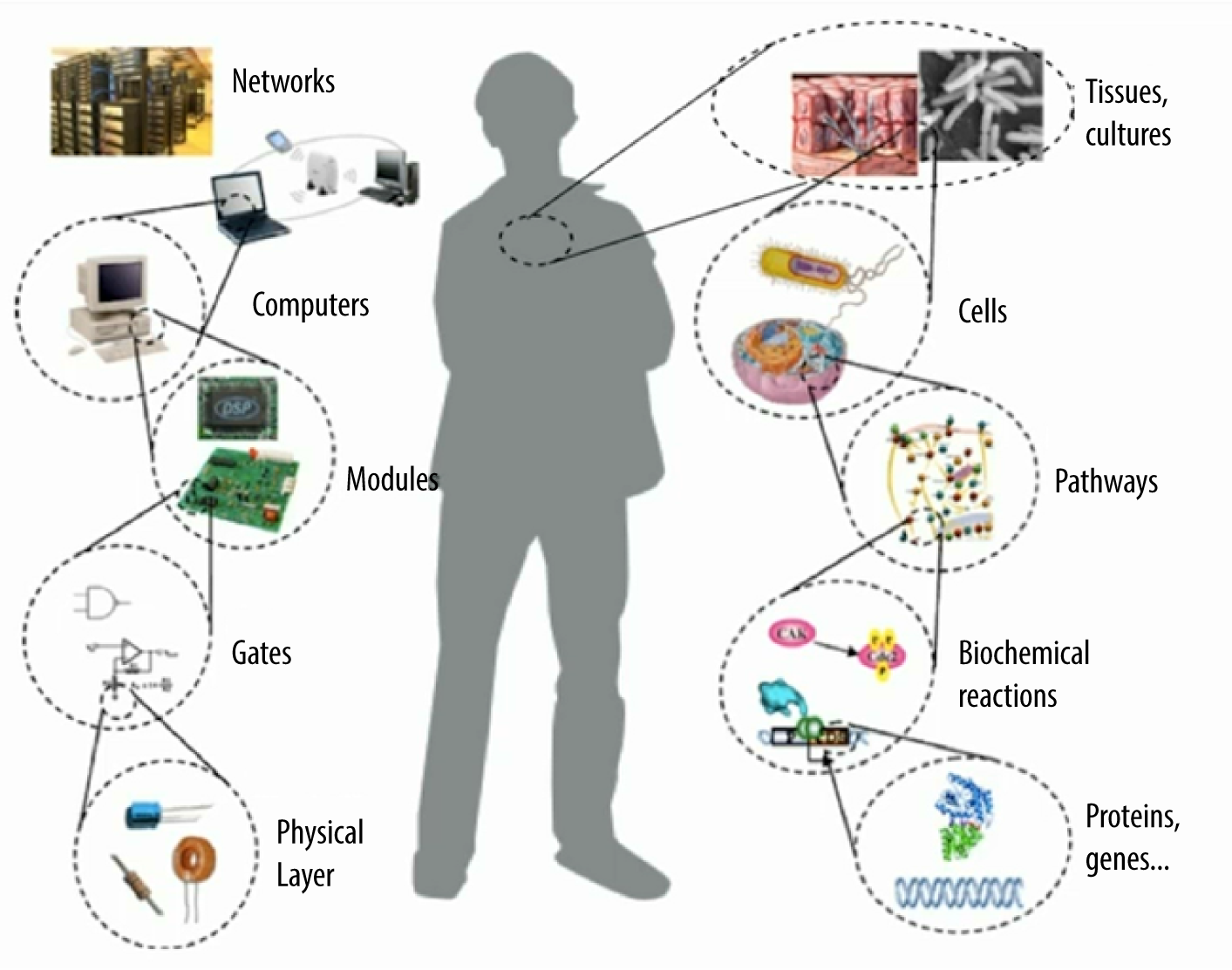
We are starting to witness a meeting of the minds when it comes to life science and engineering. And the cool part is that it comes with a programming language. Of course, today there are hundreds, if not thousands, of different programming languages in computing. There’s really only one in DNA, but if you are really up to speed, there are maybe two. The second is due to the genetic code being rewritten last week with a couple of new bases: x and y.
But this molecular programming language is really versatile. It’s been stable for about four billion years, and it allows you to reach in and program the metabolism of every living creature and component. So, I’m pretty much hooked on genetics.
The cool thing about working with these little squishy manufacturing systems with this digital programming language is that it’s all natural. It’s non-toxic (unless you are making toxins), and they can work with very raw materials such as base elements. They build from the bottom up, and are infinitely recyclable. This has been proven by the four billion years in which materials have been evolved from star dust.
The Genetic Engineering Laboratory
Unfortunately, it was never easy to do genetic engineering or become a coder. Figure 8 shows a typical genetic laboratory.
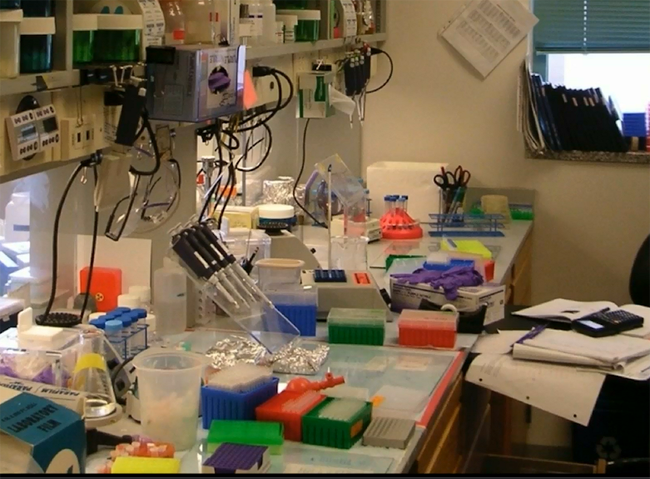
Walk into UCSF or a biotech company, and you will essentially see this type of sophisticated kitchen. If you aren’t familiar with the tools, don’t have the reagents, or don’t know how to cook (which takes PhD-level skills), you won’t be able to make much.
This is how I started, but frankly, I got tired of it. Today, the device shown in Figure 9 is changing the world. This is an electrode-array DNA synthesizer that uses little chips, and allows you to make 12,000 strands of DNA on a single chip. The particular device shown here can load in eight chips.
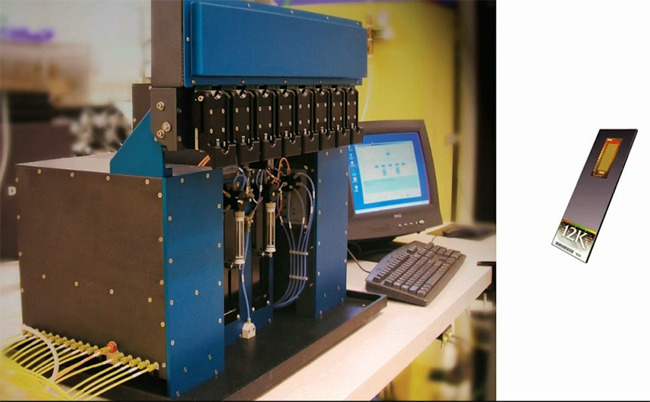
You can make massive amounts of DNA, specific to the base pair, on a machine that is about the size of a desktop printer. It’s a pretty cool piece of equipment. This is essentially a 3D printer that works at the nano scale, and there’s nothing else like it in the world of molecular systems right now.
Engineering Living Things
Of course, O’Reilly has figured out that something is happening in biology (Figure 10). They are realizing that biology is a programming language, and that cells, those squishy little information systems, are kind of the ultimate cloud computing system.
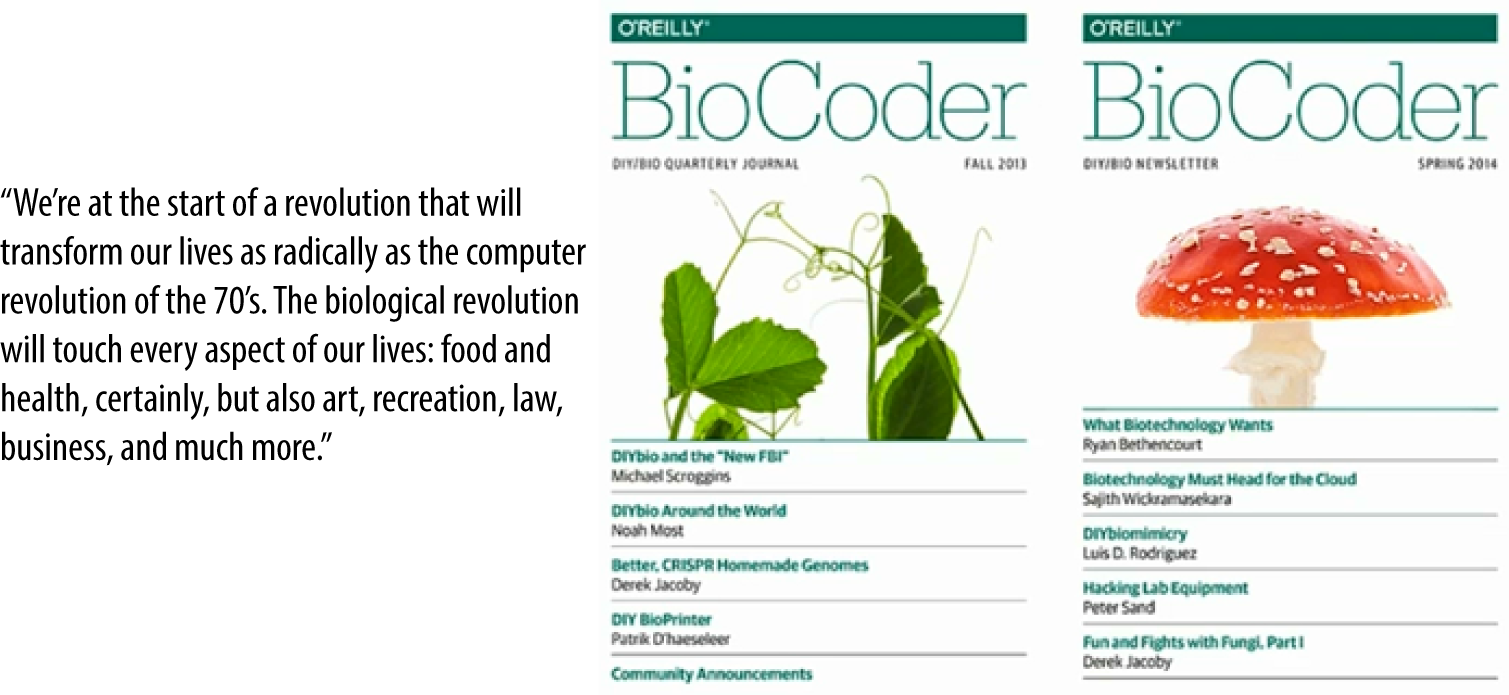
All around the world, they are seeing a crossover between the programming community, the design community, and the engineering community coming into life science now that it is being digitized. We are at the start of a revolution that will transform our lives as radically as the computer revolution. It will reach into everything we do in the world.
That’s why I joined Autodesk, a company that makes design software. They aren’t a life science or a biopharma company. They do art and design and engineering. Their tools allow some of the most sophisticated design work to be done relatively easily. And they make almost everything that’s not already alive in the world. I joined them because I want to start engineering living things. I want to start being able to engineer things at the nano school, and we need a better toolset to do it.
For the last two years, we’ve been working with scientists and our own in-house team on a project that we call Project Cyborg (Android was already taken). Project Cyborg is all about the fusing of the nonliving and the living (Figure 11) and building bridges to make something better.
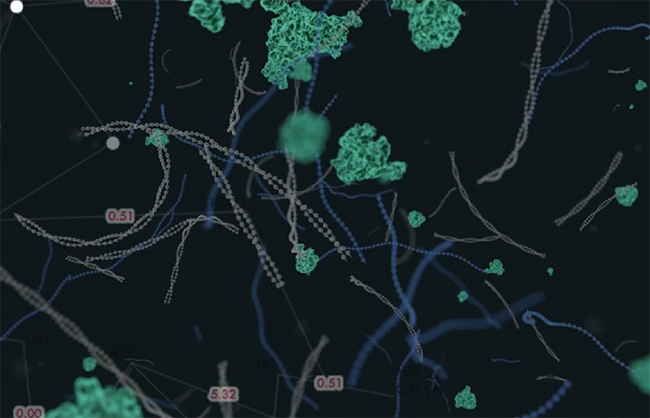
Figure 12 shows another screenshot of the Project Cyborg platform, illustrating why Autodesk is known for its visualization, its simulation, and its engineering capabilities.
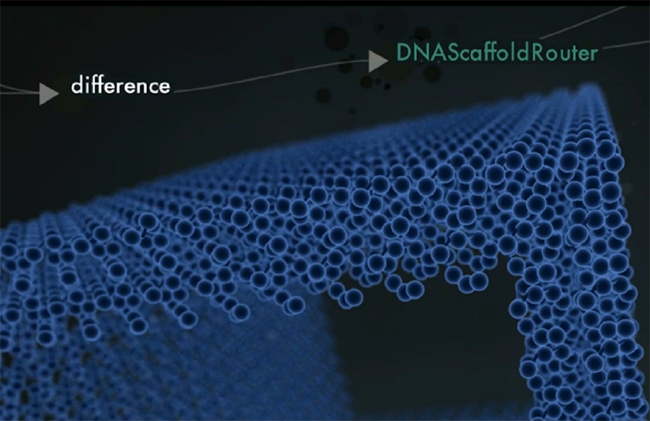
We’ve been building what we think is a pretty good platform for people to start developing their tools on. Right now, there are a lot of tools in the life science space, but most of them were made as one-offs or part of a grad thesis, and there’s not a lot of rationalization in them since they are hard to use. We can make it easier, but it is about more than just the tools. I’m not a coder anymore, but I want to make sure that we can cook the software into printers, because the printers are ultimately the limiting factor.
DNA Printers
With 2D printers, you need to worry about lots of paper, but I’m trying to get rid of them. 3D printers can already be used for many life science applications, such as rebuilding skulls and making prosthetics. The DNA printers are the newest and most powerful. There’s also the bioprinter, which actually prints living cells. One company that I work with a lot is called Gen9 (Figure 13). It uses a device to print a lot of DNA and assemble it into longer strings. It’s a high-throughput DNA synthesis company.
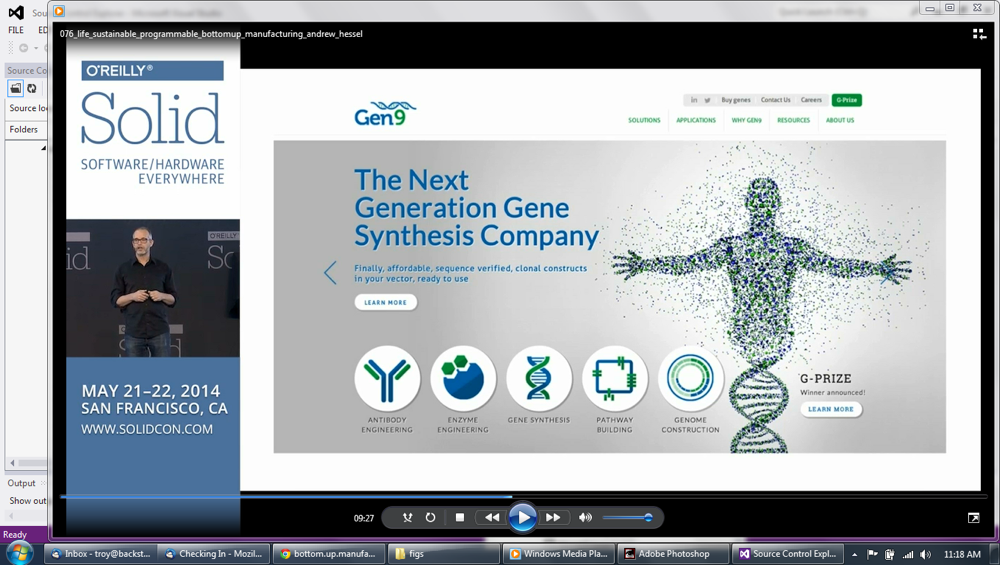
With design tools and a company like Gen9, you can actually reach into the entire evolution of living species, which is creating a new branch off that tree that we call synthetica. These are all the synthetic organisms that we’ve made from scratch, as well as a few that we’ve tweaked and modified. This has been growing now for about ten years, since the first synthetic genome was made.
We are also learning how to build robust circuits. There’s a whole community of researchers now that are taking inspiration from electronics and are learning how to build switches, signaling systems, and other controllers that are robust, powerful, and reproducible. This is being applied to things like gene therapy that only turns on after you get the mutation, or gut microbes that respond if you have eaten bad food (Figure 14).
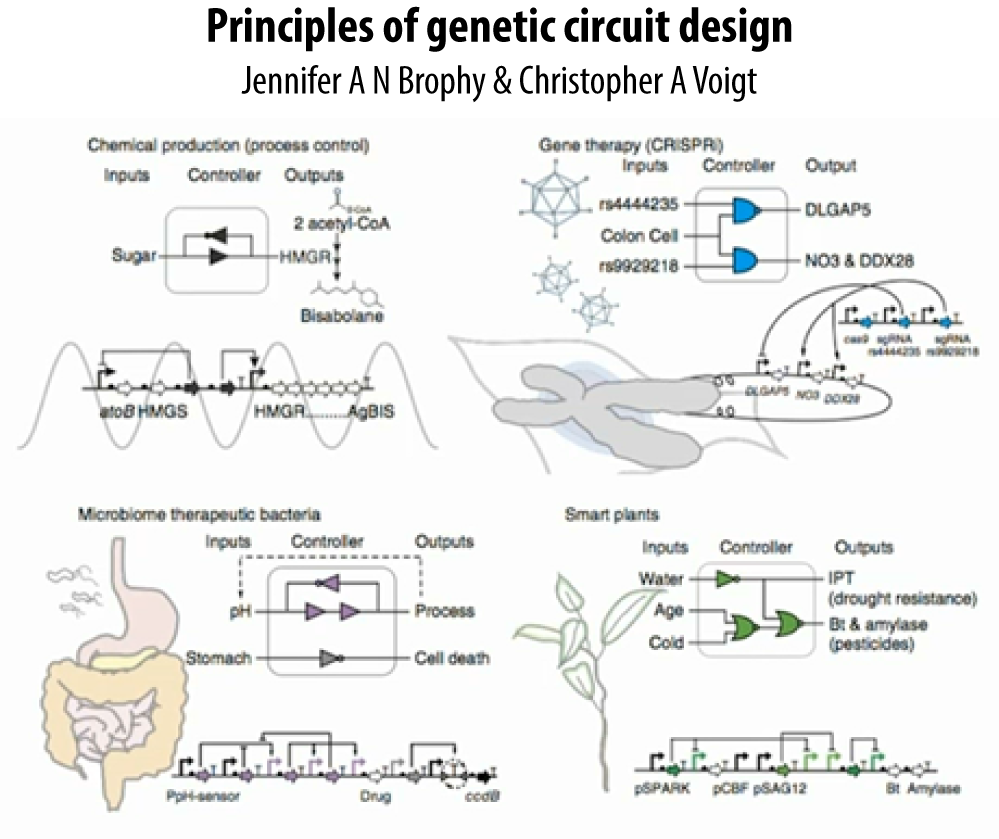
There are smart plants that can turn on the genetic constructs only when they are needed, such as when there is a drought. These are really interesting controllers that are widely applicable across the genetic engineering space.
Engineering Cells
The particular work that I’ve been doing is on the genetic engineering of viruses. One example is a harmless virus called Phi X 174 (Figure 15). It only infects E. coli, but it can be used as an antibiotic.
Its genome is 5,386 bits (bits of information), which has just become within reach of routine DNA synthesis. So today, you can become a genetic engineer by using the right tools at a relatively low cost, to make something as powerful as a gene therapy, an antibiotic, or a drug that hunts down cancer cells.
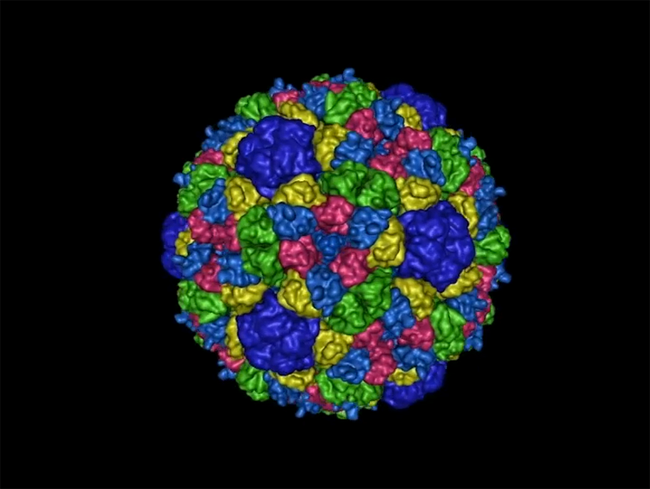
But there is a lot more to this. On the very forward edge of this technology is a man named Craig Venter (Figure 16). He still holds the world record for the largest published genome: just over a million base pairs. Over four years ago, he booted up the first synthetic bacterium. He built the whole bacterial chromosome.

In March 2014, Jef Boeke (Figure 17) and a team of international scientists that were all contributing to a project, wrote the first chromosome of yeast.
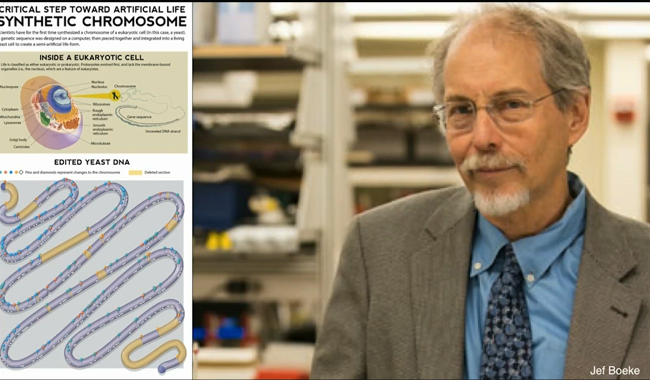
It was everyday baker’s yeast that you buy at your local food store. This shows that not only have we progressed beyond just being able to build a bacterial chromosome, but that now we can build one as complex as our own chromosomes. Even though it wasn’t larger, we have shown that we can engineer it to the base pair with precision in a very complex structure, package it, and put it in a eukaryotic cell very like our own. And it works perfectly.
This is pretty interesting. And I should also note that it is going to make for some very interesting beers in the future (Figure 18).
You can port just about any single compound from any other plant, animal, or bacteria to a yeast pretty easily. So, go Colorado.
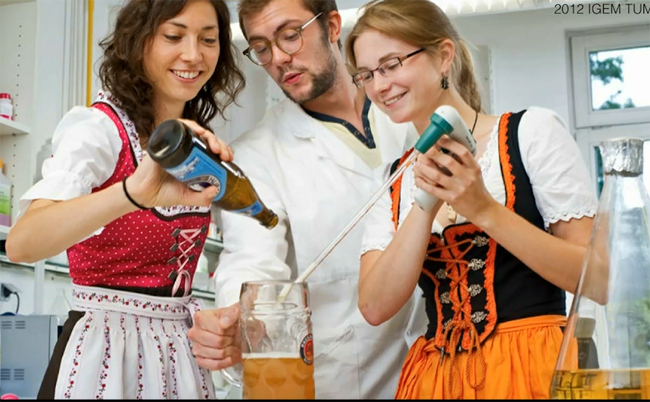
Bioprinting Cells
Once you can engineer cells, you don’t have to go and reverse engineer all of that development. Remember, we start off as a single cell before growing to 38 trillion cells. That is a dance we can’t reverse engineer anytime soon, because it is too complex. But this is where the bioprinter comes in (Figure 19).
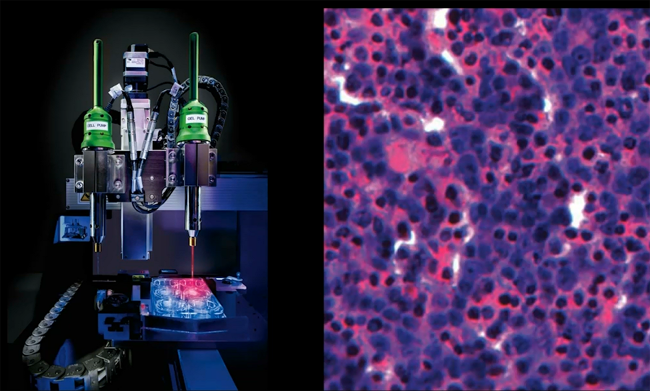
This uses bioinks, which is a fancy way of saying cells. And it prints the cells in three dimensions and allows those cells to grow together to make tissues.
A company called Organovo is at the forefront of the field. They are printing synthetic liver splices that are already being gobbled up by pharmaceutical companies in order to check for liver toxicity earlier and faster. This is not being done on animals or animal tissues, but on synthetic human tissues. This is really cool, and it can be done in a high-throughput format.
As the costs fall, you can start to play a little more. Some of the founders of Organovo went on and created a company called Modern Meadow. Modern Meadow’s job is to make leathers and synthetic meats, because now you don’t have to sell to the high-end pharmaceutical companies. In fact, leathers and synthetic meats touch the everyday consumer pretty much all of the time. My shoes are leather and I eat hamburgers.
And actually, the first synthetic hamburger has already been made (Figure 20). It grabbed headlines for the cost of making it: it was really expensive. And the taste was not bad, according to the reviewer. But there is still a long way to go.
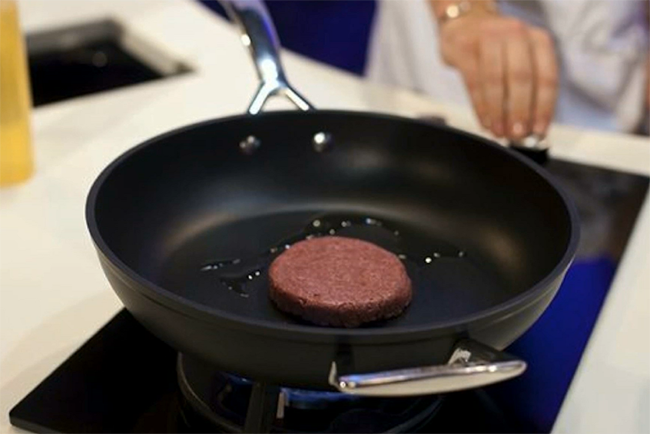
The thing is, if you can start printing cells, and if you can start moving particular cells around, you can start to really imagine what you might create. Perhaps you will create little flying robots the size of house flies, with carbon fiber skeletons and tiny chips inside of them. Things may get weird, maybe even with your next created pet. But the learning is bidirectional.
Bioengineering and Biosynthesis
Yes, we are learning some of the secrets of living cells, how to manipulate them, and how to program them. Remember, this isn’t just giant companies. This is also happening in very small groups today. In fact, in 2014, Y Combinator (which is typically known for software startups) started to allow biotech companies to join their incubator, because biology is starting to become another tool, and another robot, and another programming language.
We are learning that biology may actually end up powering most of your computing devices. It may not be in the next generation of chips, and maybe not even the generation after that, but certainly as we get down to the three- or four-nanometer scale, there is no process in the world today that can manipulate matter precisely enough to build chips at that resolution. Our chips will literally need to be grown, and the semiconductor industry is starting to make the appropriate investments to understand and harness these processes, because they have to think 15 to 20 years out.
Biomimicry takes some of the really cool stuff that nature has already figured out, which is encapsulated in genomic code. The gecko’s foot is an example (Figure 21). Actually, hydrogen bonding of the very microfine hairs on the gecko’s foot that allow it to crawl up any surface is an example. We can take inspiration from these systems, if not the actual code, and put them into different creatures to build different tools.
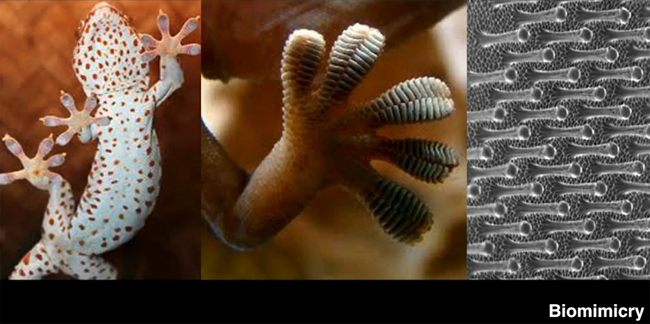
And, of course, there is generative design. When you think about it, nature has been so successful because it doesn’t start off with the design concept. It just looks at the environment, or anywhere there is an energetic niche, which is a really complicated problem. The problem could be predators, scarce energy sources, waste streams, or even variables like temperature. Life solves those problems in every environment. And now we are learning how to do similar work inside the computers.
If you need to design a chair or a car, just create it generatively (Figure 22). The computer will fill out the space with millions of designs. Then you write other programs that essentially act as the Grim Reaper, filtering away the bad designs that don’t quite cut it. This is all done in a kind of computational selection process.
This is one of the most powerful new areas of design. It is unbiased and leads to some really elegant new creations. And they meet all of the constraints of the manufacturing process or the financiers, and as many constraints as you can imagine at the start of the design process.

Smart Cities and Beyond
So, where does this take us? Well, it is going to make for smarter cities and smarter materials (Figure 23), because we are going to add three billion more people to this planet by 2015.

We can’t just keep paving over everything to do it. We have to start making living systems that actually meet the needs of humanity, or we are going to run into trouble. That is why I love bioengineering and biosynthesis. They are also going to help us get off this rock and explore other places (Figure 24).
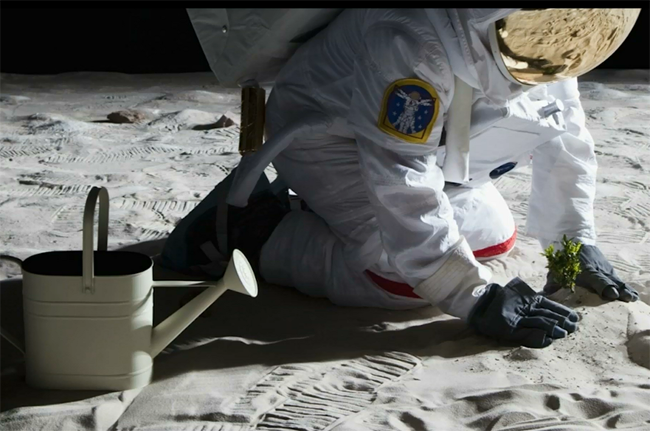
And I’m not talking about big giant spacecraft, or going to colonize other galaxies. I’m saying if you want people to live up in a spacecraft for a year, you have to think about how you recycle, how you synthesize, how you make food, and how you clean up waste. Space has been such a good system for learning about ecosystems and sustainability. These are lessons that we can learn for our entire planet.
Maybe it will even resculpt us, because of some people like Dmitry Itskov (Figure 25), who believe that we are going to be making cyborgs sooner than we cure most diseases.
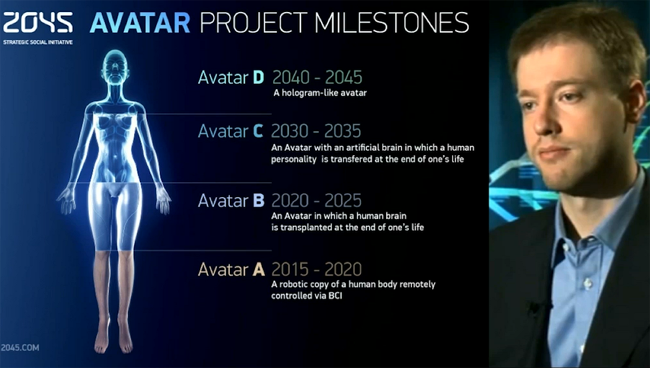
And you know what? Given the rate of robot evolution, he may be right. I just know this: the future is going to be grown (Figure 26).
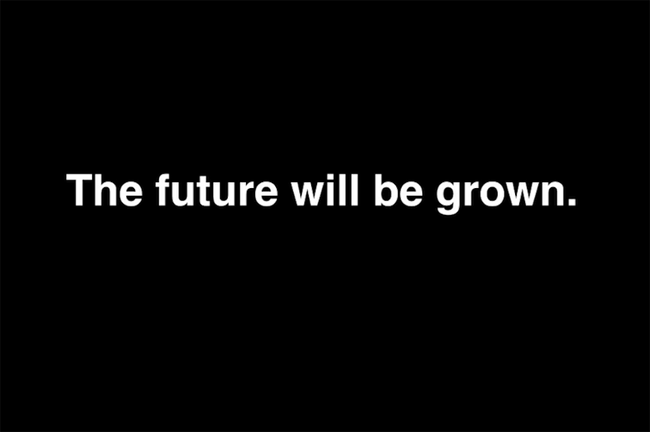
Yes, we’ll keep manufacturing, and yes, we’ll do it smarter. We’ll do it more efficiently, but more and more things that meet humanity’s needs will come from biocoding and from growing what we require.
